UP TO THE MINUTE
Form up!: Maximizing Commercial Jobsite Productivity - PODCAST TRANSCRIPT
June 2, 2025 at 6:26 p.m.Editor's note: The following is the transcript of a live interview with Brian Cook from Dataforma. You can read the interview below, listen to the podcast or watch the recording.
Intro: All right. Well, welcome, everyone, to this month's CoatingsTalk brought to you by Dataforma. I am your host, Megan Ellsworth, here at coatingscoffeeshop.com and I'm really excited to have Brian Cook here with us, talking about job site productivity. Just so everyone knows, this is being recorded and it will be on coatingscoffeeshop.com under the Read Listen Watch navigation within 24 to 48 hours. So, you'll see it up there and you should get an email from Zoom. So, you can send it out and re-watch it to your heart's content. To dive right in, Brian Cook, welcome. Thank you for being here.
Brian Cook: Yeah. Thanks for having me.
Megan Ellsworth: Absolutely.
Brian Cook: I've known your mother for, gosh, 15 years.
Megan Ellsworth: Amazing.
Brian Cook: We finally started working with the Coffee Shop brands and just in case there's any other vendors out there or people that may be thinking of using it, it's been fantastic. We love the people. We love all the content and we've been extremely happy. So, there's a free little plug.
Megan Ellsworth: Aw. Aw. Thanks, Brian Cook. Well, I really appreciate that. I'm excited to chat with you. Can you tell us a little bit about you and a little bit about Dataforma?
Brian Cook: All right. I am the senior vice president at Dataforma, which sounds very fancy, but I promise it is not. I got started with Dataforma. I knew the owner of a commercial roofing company since I was a very young kid. I was good friends with his son, so I would mow the lawn. I would sweep up the shop. As we got older, we would work there, actually work on the roof during the summer.
Megan Ellsworth: Yeah.
Brian Cook: Then I interned there during college. You can see I went to a very, very fancy college, which I, just so everyone knows, I tried to leave that off the bio, but they put it in. That wasn't me. And I loved the roofing company because it was like you're outside. You're inside. You're traveling. It's never the same. It's not boring. Then at that roofing company is where they came up with Dataforma.
So, Dataforma, for anyone that doesn't know, we've evolved a lot over the years. We're softwares. It's kind of a planned and good thing to change, right? There's new technology. There's new needs. We came out as, really, the number one service management software for commercial contractors, but now we've gotten into a lot more of ... Of course, we do document storage and bid tracking, but actually tracking production jobs, which is a lot of what we're going to get into today, but that's what Dataforma is. So, if you're looking for a software where it's like, "I need to manage my clients and my addresses and all my guys in the field," that's what Dataforma does.
Speaking of, I'll give you in a little plug. We'll probably do another one of these in a few months. We're even now building a sales module, a true sales module to Dataforma. So, hopefully we can do another one in a few months because we have new functionality to show.
Megan Ellsworth: Oh my gosh. Well, that's exciting. Yeah. We would love to chat again. So, why would you say tracking your daily productivity is critical for specifically coatings contractors?
Brian Cook: It applies a lot to pretty much all commercial contractors, but when you're out there on the job, this is where we make or break our money, right? We've looked at the job. Let's say we went out there. We spent a few hours on-site looking at it and then we go back to the office. We spend a few hours bidding it, right? Maybe we have a bidding software that they pay for, but we have all these hours and all these other hard costs. We have trucks that we use to get out there. Now we need to recoup that money.
So, I bid the job and let's say it's $100,000. Well, the number or the amount of material we're going to use on that job is the same for everyone, but if my guys out there on the actual job can get done 4 or 6 or 10 hours faster than I had bid, well, that is now all extra money that we have compared to that. Maybe I planned on 15% profit. I made 25% profit. So, keeping up every single day with where are we? Did we hit the pace that we thought we were going to hit? Is there something that's hurting us? Are there little areas that we're better at that we didn't know? I mean, that's really where we can make more money. Well, first of all, we got to make sure that we make the money we planned on, but this ... also where now we can make more money.
I remember we had a gentleman at my old roofing company. He was gruff and he was tough, but he was the best at figuring out how were we going to stage and do this job. For us, it was we never want to have to touch something twice. So, if we're picking up ISO boards off the ground and moving them onto the roof, well, we better not be putting them in a place where, later, we're going to have to move them again so we can tear off and put back. So, it's all those little pieces of being able to track that in the field and daily, right, because that's the old school way is I would see a paper sheet at the end of the week, but by now, it's too late to fix that error.
Megan Ellsworth: Right.
Brian Cook: So, we're trying to help contractors find ways where I can see it right now, right, today where we were.
Megan Ellsworth: Yeah, kind of like a live stream in a sense.
Brian Cook: Yeah.
Megan Ellsworth: You're seeing-
Brian Cook: It's definitely getting there, so that's awesome. I can't say whom, but a couple contractors lately, because we can use softwares together now, so in Dataforma, they have a link. So, in that job, in Dataforma, there's a link to the camera. So, anytime one of their staff is looking at that job in Dataforma, click a link. Even if it's on their phone, boom. I can see the cameras on the job site and what's going on.
Megan Ellsworth: Wow.
Brian Cook: Pretty neat.
Megan Ellsworth: That's really cool. That's huge. Well, okay. So, I think also, for coatings contractors, there's so much productivity that can be expedited in a sense. There's things that you can make improvements on and so, that's so important in the sense of finding these kind of easy fixes through the cameras, through the ... All the data is just so important, so that's ... Wow. I'm excited. So, what would you say makes multi-job organization challenging for contractors running these multiple jobs, big jobs at a time?
Brian Cook: Yeah. This is tricky because this is the way a lot of companies work. Many of us now work in multiple states, right?
Megan Ellsworth: Right.
Brian Cook: Maybe we have multiple offices.
Megan Ellsworth: Yep.
Brian Cook: So, I mean, the old school method I remember is you would wake up at four, five in the morning. You would drive to that job two or three hours away so you could be there when the crews start and watch the job for a couple hours, just to see, okay, how is it going, right? Because I need to be here, but it is a three-hour drive away. So, let's watch it for a couple hours. Well, now it's almost lunchtime, but now I have to drive three hours back to the office, right, just to document what was said or to talk to people or maybe I have other bids to work on now.
So, our work, it's not always consolidating these little areas, right? It's a lot of travel. It's a lot of manpower to try to cover this. Even then, we had the old school ... What was it? It was an S: drive. I know you're so young. Do you even know what that is? The shared-
Megan Ellsworth: A-
Brian Cook: ... drive at the office?
Megan Ellsworth: Yes, yes, yes, yes, yes.
Brian Cook: So, we would have our, yeah, our own server. So, it's like okay. Cool. Well, now I have to take all this information and upload it to the S: drive, but there was a guy named Norm and Norm never uploaded things the same way as everyone else. So, if you're looking for the Norm's files, you had to think like Norm.
So, all this just became an issue. I mean, we would even have, Megan, multiple times where we found out we had two or three estimators working on the same bid because we didn't know because we were at different offices and we were never in the office together. So, all-
Megan Ellsworth: Oh, no.
Brian Cook: ... of that just becomes such a waste for ... That's where the owner of the company, I remember, just flipping out like, "What the heck are we doing? I cannot believe that we're doing this crap."
And here's one that's very related, but seems kind of simple. We had a multi-building owner. They were a consultant that we worked with and they said to us one time, "We never know when a bid is coming from you because it looks different every single time." So, we're going to touch on this later with reports, but they even said, "Hey, with your proposals, can you make them look the same every time, please?" I know that sounds crazy, but when we have people running around all over the place and in different offices now, that could actually still be an issue, even though it's 2025 and we can just about launch a nuclear weapon from our iPhones.
Megan Ellsworth: That is so true and terrifying. So, I love the S: drive comparison. That's crazy. I mean, obviously, it's a very big difference, but how would you say Dataforma compares to an S: drive?
Brian Cook: Well, it's the ultimate shared S: drive. I usually joke that we're like Dropbox. We just stink in marketing, right, because you do have complete access. So and what's really nice about the way we structure Dataforma is ... and this is why we're really good for commercial contractors. I mean, we certainly have residential clients. Probably 25% of our clients are residential, but the one huge difference that we have over nearly every one of our competitors is ... If there's Hilton Hotels, right, so Hilton Hotels is one client, right? Now, they may have 1,000 buildings that I work on for them. And they may have 10 or 15 office locations where they want me to send an invoice because, oftentimes, if I'm a coatings contractor, just because I'm doing the work at this Walmart, right, in Fayetteville, Arkansas, that invoice is most likely not going to that building in Fayetteville, Arkansas. It's going to another location.
So, we got very lucky. I say "we." I was 18 when they built this, but I came along shortly thereafter, so I [inaudible 00:11:07] When we built this that we had that structure built into it, where it's one large client, infinite number of offices and then infinite number of buildings or sites that we work on. So, if I want to save a document in Dataforma, I could save it directly to Hilton Hotels, the client. I could save it to the building file, the 1729 H Street Hampton Inn Hotel in Washington, D.C. because, hey, this document is specific to this address. Maybe it's the roof plan itself. I could save that document to a work order. So, if we had to go out to do a repair or a warranty callback, maybe that document is specific to that work order, so it gets attached to that permanently. Or, if it's a big coatings job, I may have 400 documents in the end that are attached to that project. I have daily update pictures. I have spec details in the manufacturers.
So, not only can we save them, but we can save them in the proper locations. Then, when a technician is out in the field, in the mobile app, they can actually upload or download any of those directly from their mobile app.
Megan Ellsworth: Oh, amazing.
Brian Cook: Yeah. So, you have really important PDFs or a scope of work, right? Any document that you want to make available to your field technicians or even just your traveling sales staff, they can see from the app as well.
Megan Ellsworth: Okay. Well, that's amazing. I love that you showed the app too. Thanks for the little show-and-tell there. So, I mean, you've already kind of touched on this. How does Dataforma improve multi-job project management? Let's go into how does this change their communication with clients?
Brian Cook: Well, yeah and there's even more here because I focus really on the documents folder.
Megan Ellsworth: Yeah.
Brian Cook: So, for multi-job and even contractors that have multi-office, so our company was itself kind of interesting. We had our commercial roofing company. We had a separate sheet metal company, which is fairly common for tax purposes that that's a separate entity, right, but then we also had ... and we had two office locations. So, we didn't want office B to always see what office A was doing, right or vice versa, but the owner needed to be able to run reports on either office or the whole company, right? So, that was built into Dataforma.
Then we purchased another company at the Eastern Shore of Maryland, so they had to be enfolded in too. So, we had every single weird situation you could think of, right and we had different types of employees. Some were union. Some weren't. So, what's lucky for our contractors is when we run into these situations, it's already baked into Dataforma, right? Cool. Then, on top of that, we were one of the original 12 Tecta America companies, so yeah. We're one of the original 12.
Megan Ellsworth: Wow.
Brian Cook: So, Tecta is an owner at all of Dataforma, but when Dataforma was being built, we knew that deal was happening. So, not only did we build it to be scalable for our company, but scalable enough for Tecta.
Megan Ellsworth: Got it.
Brian Cook: So, if you look at that top 100 list every year from Roofing Contractor, we always have 40 or 50 of the contractors that use Dataforma because it scales really well, but also, the majority of our contractors are 5 to $10 million a year in total revenue because that's the average size of a contractor, again, be it coatings or HVAC or roofing or electrical or plumbing, right? That's the average size of a contractor.
Megan Ellsworth: Oh, yeah.
Brian Cook: Yep. Then, like you said here on this slide, so, everyone, just so you know, when your technicians are out there, they're adding their pictures, right? Here's all my-
Megan Ellsworth: Whoa.
Brian Cook: ... pictures. So, you have that stuff every day and then you do have your own little dashboard. So, you can always be seeing and that dashboard is customizable by each user. So, if I run the Oklahoma City office, when I log in, I can see how many bids are we working on at the Oklahoma City office? How many bids are pending? Which bids do we have to follow up on still? Which jobs are we waiting for the materials? Which jobs are we waiting for them to check to see if we did everything right? You have your own dashboard. Then, if I'm an estimator or salesman, I just see my jobs. "Hey, Brian Cook, you have to bid these five. They got assigned to you." That's what we actually used it for too at the beginning.
Megan Ellsworth: Wow.
Brian Cook: "Hey, I need to know who the heck is working on what so that there's not just a shared Excel sheet that never gets updated."
Megan Ellsworth: Yeah. That's great too, like you said, for the people in the field. They're uploading stuff. Then for the people in the office, I love that you can assign people to accounts. So, like you said at the very beginning, you're not having two people bidding the same estimate or bidding the same project.
Brian Cook: Oh my gosh. You just reminded me. So, we have another piece of new functionality, like you said-
Megan Ellsworth: Ooh.
Brian Cook: ... with assigning, called the Task Manager. So-
Megan Ellsworth: Ooh.
Brian Cook: ... for each job, like, "Hey, Megan, you got to order the materials," right? So, Dataforma, on your mobile app, it'll tell you, "Hey, here's all the stuff you have to do," and it'll text you and annoy you and text you until you do it. Then I can also say-
Megan Ellsworth: That's awesome.
Brian Cook: ... or your mother could say, "Hey, I'm Megan's boss. If she's three days behind, you need to text me so I know she's behind. Don't make me go and look and see." So, then, once you say, "Okay. I've done this," maybe they'll say, "Hey, Brian Cook, you're the one that's supposed to go get the certificate of insurance or the permit or whatever." So, you set up all those different tasks that have to be done and now it's pinging people across the country whenever they're up.
Megan Ellsworth: Wow.
Brian Cook: So, thank you for the reminder. I almost forgot.
Megan Ellsworth: That's awesome. Well, especially letting the manager know or the boss, whoever, know that, "Hey, this still hasn't been done and you need to check in with your person," that's huge because, I mean, accountability is everything for people because, without accountability, I mean, would stuff get done? I don't know.
Brian Cook: Yeah. Like I said at the beginning with the evolution, contractors, we're so different now than we were 22 years ago when we created Dataforma, right?
Megan Ellsworth: Right.
Brian Cook: That's why, now, we're finally building a sales module because back then, commercial contractors kind of just bid stuff and waited to hear.
Megan Ellsworth: Yeah.
Brian Cook: That's not the case anymore. So, our clients and our prospects have made it clear to us, "Hey, we want you to have this." So, we said, "Fine. We're going to build it for you."
Megan Ellsworth: Yeah.
Brian Cook: Before we would make the managers go into Dataforma and look to see where things were. It's like, "Well, no. Everybody's running around now. Dataforma should just tell them and each person should customize what and when Dataforma is telling them."
Megan Ellsworth: Yeah. Yeah. I love automation. I love having things automated, reminding me. As someone that's a little scatterbrained, that is so good for me, so that's cool that you guys have that. So, how does Dataforma help contractors track their daily productivity? What does that look like?
Brian Cook: So, what's nice about this is we've done a couple things that have eliminated other apps that our contractors were paying for.
Megan Ellsworth: Okay.
Brian Cook: So, the first one was just a time card, so true clock in, clock out, right? There's a couple and they're greats. They're great apps. There's nothing wrong with them, but they are separate apps.
Megan Ellsworth: Right.
Brian Cook: So, it was one of our contractors that said, "Hey, our foremen are using your app for everything. Why are you making us pay for this app where all we do is clock in and clock out?" So, we said, "You're right." So, we built in ... Hey, if I'm a foreman and again, each contractor ... I guess one of the benefits of coming from the contracting business is that we know that every contractor, while we're doing the same work, we speak differently, right? All across the country, there's different jargon and everything's a little bit different. So, pretty much everything is customizable in Dataforma, right?
Megan Ellsworth: Awesome.
Brian Cook: You call it X. You call it X. Then, if your buddy calls it Y, they call it Y. So, when I log in to get hours, maybe I'm the foreman and you want me to log the hours for my whole crew. So, boom, I can clock the time, but-
Megan Ellsworth: Nice.
Brian Cook: ... maybe your mom has her own contracting business and she says, "Nope, I want each person to log their own hours."
Megan Ellsworth: Yep.
Brian Cook: Now each person can log their own hours and we even have a discounted rate for that so that if that user is just going to log hours, you don't ... We're not going to kill you with the price, but now each person is logging their hours and another big benefit of every person doing their own hours, there's free GPS. So-
Megan Ellsworth: Ooh.
Brian Cook: ... yeah, you could be big brother if you wanted to and see where they went throughout the entire day, but the real point is every time one of your technicians logs in or out, we can see exactly where they were. So, if the customer says, "I don't think you were here," or, I mean, there's real cases where we knew what bars our contractors would go to at the end of the day and kill an extra hour. It's like, "Hey, Brian Cook, log out when you leave the job, not when you go home and then sit there for an hour."
Megan Ellsworth: Totally.
Brian Cook: So, yep. They're cutting out a pretty sizable cost to their company to track those hours and then those are all tied directly to that job and whatever cost codes that contractor has, even if it's shop time or drive time. If I'm the project manager, every single day, I see exactly where we are on hours on that job. We estimated 1,000 hours. So far, we've used 100. Then I think one of the next slides shows you can track how much of the job are we actually done, so they can enter that too.
Megan Ellsworth: [inaudible 00:21:40]
Brian Cook: Yeah. Exactly. So, perfect. This [inaudible 00:21:44]
Megan Ellsworth: Yeah. Let's get into the metrics.
Brian Cook: Yeah. I mean, this is the real thing. I mean, this doesn't matter if you're a coatings, mechanical, electrical. This is what everyone wants to know. Hey, I estimated this many hours and we said it was 10,000 square feet that we had to do. I thought it was going to take us three and a half days. Well, after day one, if we've only done 1,000 square feet for some reason and we've used X number of those hours, I know we are in trouble, right?
Megan Ellsworth: Yep.
Brian Cook: That way, I mean, it's just really, really, really simple. So, this came out about a year ago and our contractors have loved it because, again, it's completely customizable. All of those metrics or those ... We call them production items that each contractor wants to track are completely customizable. All they have to do in the field is type in a number. Today we did 30. Today we did 50 and that's how simple it is to have that information.
Again, it's all because it all starts in one system. When we heard about the lead, it went into Dataforma. When we created the proposal, it was out of Dataforma, right? Then we got the job and we put those metrics in the Dataforma and now they're using the Dataforma app. And the beauty is, I guess it's funny. We actually came up with Dataforma before apps. So-
Megan Ellsworth: Oh.
Brian Cook: ... we built the backend of the database. So, it's like a true ... if I run the office and I can run reports. Then apps came out and we said, "Oh, this is great." We didn't try to recreate the entire database, right? We said, "You know what this app should be? It should be a tool just for the guys in the field." What would-
Megan Ellsworth: Got it.
Brian Cook: ... I want? That way, we can keep it simple, right, because a full website gets very complicated, but it's just an app. It's like, "Nope, just click on your job. Just click start time." So, it makes it really simple for the guys in the field.
Megan Ellsworth: Yeah. That's great because, I mean, you want them to be spending their mental energy towards the job, not towards figuring out the app or whatever.
Brian Cook: Well and we don't want them to have the excuse of, "Oh, I can't use this," even though-
Megan Ellsworth: Exactly.
Brian Cook: ... they're all using Instagram and Facebook now.
Megan Ellsworth: Yeah. [inaudible 00:23:57]
Brian Cook: But no, seriously, because it was made only with them in mind. And again, there's tons of uses for the office staff, but they're doing this stuff all the time. They're used to it. We would say ... because I think now we have 16,000 daily active field users using the Dataforma-
Megan Ellsworth: Wow.
Brian Cook: ... app. Yeah. I remember when it was, well, obviously, zero before apps.
Megan Ellsworth: Right.
Brian Cook: I remembered it was 100, then 400 and 500, so-
Megan Ellsworth: Wow.
Brian Cook: ... it's been fun.
Megan Ellsworth: Wow. Well, okay, so I have a random question here. So, you've said electrical, plumbing, so it's more than just roofing contractors that can use Dataforma.
Brian Cook: Yeah, absolutely. I mean-
Megan Ellsworth: That's cool.
Brian Cook: ... I think it's a great fit for any commercial contractor.
Megan Ellsworth: Got it.
Brian Cook: Then residential contractors, just depending on what ... Some residential contractors just want certain pieces of functionality that we don't have. A lot of times, it's the, "Hey, text the homeowner that our technician's on the way with the ETA and keep that up to date." That's something we don't offer because, typically, commercial contractors, that's not a big thing for us to have, but I think any commercial contractor, because of that unique many to one I talked about with Hilton Hotels and multiple addresses, but all tying back to that central client, even if we're sending the invoice to a different address, I think that we're ... That is definitely our niche because, like I said, mean, we get new mechanical and electrical and coatings people all the time. They're typically coming from the ... some of our same competition that we see in the roofing industry, but they've tried the ones that cater to residential. Then they try Dataforma.
Megan Ellsworth: Yeah. Well, so that's a good point for anybody out there listening that ... and watching, hello, that, I mean, you can customize it. If you have HVAC as well as roofing as well ... Hey, maybe you have a plumbing [inaudible 00:25:55] I don't know. All departments of your company can use it to keep the job site maintained, productivity on top of things.
So, also, just want to mention for our people out there watching, if you have questions or comments, please let us know in the chat. We will take questions at the end. So, Brian Cook, let's get into some common mistakes contractors should look out for, avoid when tracking their productivity.
Brian Cook: Yeah. It's ones people probably think of. I think I would stress here how much more prevalent it probably is than you think. I can't say the name. Very, very large contractor, a billion dollars, a year said, "Hey, we have these people. These people go out and they perform inspections and they're all doing it differently." So, now, imagine if I'm this billion dollar a year entity that's getting hundreds of these inspections a week and they're supposed to be uniform, but they're all incredibly different. So, now I have to pay people just to go through and try to retype them all, just so that they're uniform and we're tracking the same data because some of this is very, very important, right?
Here's a good one, a mechanical contractor to say, "Well, we need to track this exact number every single time we go out there because if it goes out of a range, it's out of warranty, right?" So, in their Dataforma database, they're able to customize that number. So, any contractors that says, "Hey, I have a very specific thing I need," it's like, "Cool. We're going to build you a field so you can have that," but a lot of people are still doing so much of this on paper.
Megan Ellsworth: Yeah.
Brian Cook: Then the problem is, so it comes back on paper and the handwriting is miserable. So, then, sometimes, there's problems when I take that paper and try to put it into an accounting system or CRM, whatever it is that I'm using it. Then, two weeks later, that technician is like, "Hey, I was supposed to have 40 hours for this week. You gave me 36." It's like, "Well, I thought this number was that number." So, now we have to go back and fix payroll.
Megan Ellsworth: Yep.
Brian Cook: I mean, it truly happens all the time. And then that last one, that's one that I am huge on, the collecting the ... If we're going to spend time capturing data, we should at least use it for something.
Megan Ellsworth: Yes.
Brian Cook: I'm well known for ... When you go to a nice hotel and they have a separate gym, it's really nice, but they have a paper login. I'm like, "I'm never signing that." The lady looks at me. She goes, "What do you mean you're not signing it?" It's like, "Well, you're obviously never going to look at it, so why should I sign this?"
Megan Ellsworth: Right.
Brian Cook: But if we have the data, absolutely. This was on one of the first slides and I kind of skimmed over it. If you're using a system like Dataforma and I'm sure some others do it too, I could see that, hey, Megan is really, really good at bidding these types of jobs, but for some reason, every time it's a job that's on a school, because that can be one of your little subtypes that's added, she doesn't get that job. Well, now I know either, one, figure out what's going on with her bids on those schools or just say, "Hey, you know what? I'm going to give it to Heidi. That's fine. Megan's really good at these ones. Let her do those and then let Heidi do these."
Megan Ellsworth: Yeah.
Brian Cook: But, again, we would never know that if it was just written down on paper or nowhere.
Megan Ellsworth: Right. Right and that's so important because having your crew members in the right seat on the bus is so important to their productivity, the company's productivity and overall happiness also and making sure that they're ... I think also being able to see that data and analyze it in that way can make the employee feel like, "Oh, they're recognizing. Oh, yeah. I'm struggling in this area, but I'm doing really well in this area and they're congratulating me on that." So, I think that's such a good point is being able to look at this data and use it how you need to, not just-
Brian Cook: Yeah and -
Megan Ellsworth: ... what everyone else is doing, yeah.
Brian Cook: Yeah and the last part of that and this is why I stress that Dataforma covers so many different aspects, even if we have ... Maybe we have a separate time card app and a production app and a CRM. Well then, are you really taking the time to push that data together somewhere to look at it?
Megan Ellsworth: Yeah.
Brian Cook: And I will openly admit. I think Dataforma is fantastic. I don't think it's for exactly everyone, but I think we are the best. I don't think that because I work there. I work here because I think that. I've been around for 18 years doing this and there's parts ... There may be some picture apps that have slightly better functionality than us because they only do pictures. They're made like this type of app, but it's like when you look at it as a whole, the power of having all this together and knowing that, "Hey, my sales, my service, my production, my labor tracking, all my document storage, it's all in one place and with a click of a finger from my phone, a tablet, a computer, anywhere, I can have access to it," there's real power in that.
Megan Ellsworth: Yeah, there really is. There really is. So, you're not having, like you said, to track down all this data, put it in a spreadsheet, analyze it, comparing it to all the different data from the different apps and all that stuff. So, having it in one place really is convenient. How would you say contractors can ensure their field crews report accurately and that's not an insult to them or hurting anyone's egos or feelings or anything?
Brian Cook: Yeah. Well, it's true, but we've actually found and this sounds ... This seemed counterintuitive to me when we created the app and Dataforma and then we were tracking it. Especially over the recent years, it's incredibly true. They are happier than they were if they had paper or something else. It seems the most common answer as to why is, well, if I just do this on Dataforma, right, it takes me two seconds and then I'm done. I don't have the office manager or the project manager calling and yelling because they need something and they don't have access to it. It's not like Dataforma syncs up at the end of the day. When they take pictures or they enter a report, it is immediately live to everyone else in the mobile app or in the main application. So, the guys in the field like it because it's just less hassle back and forth. It's truly a thing.
Then there's fields in there where these reports are customized, so it's simple and they get the ... They kind of memorize the steps. So, they know, "Hey, in the first, I'm going to answer this. Then I'm going to answer that," but if there is a step that you've decided, Megan, is really important for your company, you're allowed to asterisk it. And if they try to exit a report without answering that question, it's going to say, "Hey, you left required fields undone. Are you sure-"
Megan Ellsworth: Oh, wow.
Brian Cook: " ... yeah, you want to leave now?" Now, here's the trippy part, again, that was ... We fought over this and I like our solution and it seems like our contractors do. We didn't make it so that they can't submit that report. We made it just so it tells them, "Hey, are you sure you want to submit this without this answer?" Because the contractors end up saying, "It's more valuable to me that I have 85% of the answers than zero because you won't let them, because if they're exiting, they're exiting."
Megan Ellsworth: Yep.
Brian Cook: So, but yeah, the biggest thing is you make it as incredibly simple for them and repetitive. No matter where they're taking a picture in the app, it functions the same. Everywhere they want to add comments, it functions the same. We do have a Spanish version of the app, so-
Megan Ellsworth: Oh, that's awesome.
Brian Cook: ... yeah. A bunch of our help videos are being done in Spanish now as well.
Megan Ellsworth: Amazing.
Brian Cook: Yeah. So, I mean, obviously, that's a big part of our industry.
Megan Ellsworth: Yep.
Brian Cook: So, just make it simple for them. Make it comfortable. If they have an issue, it's like, "Cool. I can go and watch this video." Or we have a member of our customer service staff that her first language was Spanish. So, if you want to call in and speak to Glenda and I've known her since I was 18, so it's fun, but-
Megan Ellsworth: Yeah. Awesome.
Brian Cook: ... yeah.
Megan Ellsworth: I love it. Okay. Well, that's really cool. I'd also love to get your point of view on how contractors can ensure their field crews are reporting accurately outside of Dataforma. Are there any tips and tricks that you all used at your contracting company before Dataforma? This is a curveball.
Brian Cook: Oh, God. No, because ... So, here's the tip and trick we used and this is real. We had a color-coded Excel doc and this is just for our service crews. So, these were $550 invoices at the time. Here's how much work went into it. Color-coded Excel file, the old ... You've probably never seen them, God bless you, because you're younger than I am, the triplicate forms, the three carbon copies. They had that-
Megan Ellsworth: Oh, the yellow paper.
Brian Cook: Yep.
Megan Ellsworth: Yeah.
Brian Cook: So, they got that. Then we put it into the Excel file and then we had a whiteboard to try to make sure we didn't lose service tickets-
Megan Ellsworth: Wow.
Brian Cook: ... but we did. So, I mean, the answer's really no. I was only a full-time project manager for two years. So, outside of Dataforma, I didn't learn any tricks. That's why when Dataforma was created-
Megan Ellsworth: Exactly.
Brian Cook: ... and they had offered me a job, I said, "Yes."
Megan Ellsworth: Yeah.
Brian Cook: So-
Megan Ellsworth: That's awesome,
Brian Cook: ... yeah, again, I'm sure there's something. I just didn't know of it.
Megan Ellsworth: Yeah. Well, I would love for you to kind of talk about how the reporting enhances communication with customers and how that, this Dataforma, can be a tool in these relationships with customers.
Brian Cook: Yeah. So, this is a cool one and, again, because I have personal experience. So, we have what we call the customer portal. So, if you're the contractor, your client goes to your website. We don't care if they know about Dataforma, right? We want you to go to your website. They put in a login. Now they only see what you want them to see, right? So, all contractors remember that. They don't see pictures or jobs or whatever that you wouldn't want them to see and you can select them very easily. They can submit service requests. They can approve service upsell proposals. They can see updates on jobs. You can make any document whatsoever available to them. So, that's really where I used it. My last job as a roofing contractor was a massive State Farm. I mean, it was a $6 million job. We were doing the roof and the EIFS and all sorts of stuff.
Megan Ellsworth: Wow.
Brian Cook: And it was in Charlottesville, Virginia. So-
Megan Ellsworth: Oh.
Brian Cook: ... I was there all week and what I would do in that client portal is, every day, I would take a roof plan and color code where we had torn off the roof, where we had done EIFS, where we had done counter flashing. I would add a bunch of pictures, right and then I would upload it as a daily update sheet so that the State Farm corporate could see it. They actually said, "Hey, man, we love this," because I was ... I think I was 22, this little 22-year-old. Now we don't have to fly out to Virginia every week. We can just check it online and , really, we've upgraded that a ton because now we have what we call site tags, so actual GPS points on roofs. So, you could say, "Here's exactly where we did this," or, "Here's exactly where the leak is."
And with all of these reports, so daily safety checks, safety incidents, change order from the field, what did we get done today? Every contractor can build those reports in the mobile app and the guy in the field, they just say, "Yes," "No," "Maybe." You can give them a, "Here's five options that you can select from. Pick the one that best matches." So, they're always clicking one thing at a time and they're adding pictures. That builds a report, so a true 10-page report of here's everything cool that we did today. Then, now you can just send that directly to the client, either from the field or the office can be notified to review it and then send it to the client. So and that's even really good for OSHA. Let's say OSHA-
Megan Ellsworth: Oh, yeah.
Brian Cook: ... comes in and says, "Hey, man, we need to look at every single safety report in the past six months."
Megan Ellsworth: Yep.
Brian Cook: Well, our contractors, yeah, they grab it in, I don't know, maybe 13 seconds.
Megan Ellsworth: Wow. Wow. Also, random question, can they add their company branding to these reports?
Brian Cook: Oh, yeah. No, yeah. So, that's a great one. Thank you very much.
Megan Ellsworth: Yeah.
Brian Cook: So, not even just their branding, what font do you like?
Megan Ellsworth: Oh, wow.
Brian Cook: How many pictures do you like per page?
Megan Ellsworth: Yeah.
Brian Cook: Right? Then you can even have different reports for different clients. So, invoices are the very typical example.
Megan Ellsworth: Yeah.
Brian Cook: Client A wants it completely itemized. Everything's spelled out. Client B just wants to see he charged me 600 bucks, right?
Megan Ellsworth: Yep.
Brian Cook: So, anytime we go to print, we can choose which ones we want to print. So, I mean, they can completely customize the way anything prints out of Dataforma, even if ... There's a lot of companies, Megan, that have multiple entities. So, if I'm a user for XYZ Roofing Company and you're at ABC, but we're actually under the same parent company, Dataforma is smart enough to know that my username wants you to print the XYZ, but your username wants the ABC.
Megan Ellsworth: Okay. Wow. Wow. So, again, if a contractor has an HVAC department or they do gutters as well and siding and all these things, that's awesome. So, you can have different branding for different departments.
Brian Cook: Yep, exactly.
Megan Ellsworth: Incredible. Wow. Okay. Well, I'm learning a ton. If anyone out there has questions or comments, please let us know. I did get one, if this will be on demand. It will be. The link will be sent out to everyone, so you can watch it back. So, Brian Cook, lastly, what are some of the financial benefits of tracking job site productivity? What have some of the returns been that you've seen?
Brian Cook: Well, I mean, we talked about it. One, if you can catch a job that's going bad before it goes bad, that's huge. You'll be able to save a job, which, I mean and it would pay for Dataforma. It would pay for pretty much any CRM you would buy, saving one job that's going bad.
The other thing I talk about that's not always endearing to the controllers that I meet with, but it is to everyone else, I try to stress that accounting systems are incredibly important, right?
Megan Ellsworth: Right.
Brian Cook: But accounting systems count the money. They don't make the money. The guys in the field are what make the money. Can we get bids out? Can we win bids? Can we finish those jobs on time or early? That's what actually makes us more money. Then we need the accounting system to make sure that money's being allocated the correct places. Can we project out with what our cashflow is going to be?
All incredibly important, but the goal of Dataforma, because when they created Dataforma, again, I was young, but I was there. So, I was 19 when they started buying other generic software programs and then they went to the big accounting system. So, for the larger contractors, let's say we're over 20, 25 million a year. This becomes a very typical thing. I'm going to look at a high-end Sage or a high-end ... whatever really, really nice accounting system that offers all of these modules. They tell us how, one, the modules are all integrated. They're all integrated, right? Well, a lot of times, they've bought that service module as another company and bolted it on. So, it's not truly integrated.
Megan Ellsworth: Yeah.
Brian Cook: Then you're paying big, big money, over 100,000, $200,000 for this system and they have to spend time customizing it. Then it doesn't really work and that's the path that our company had gone down before our now president spent two years building Dataforma with a programmer from scratch.
So, we've kind of seen this. Again, the accounting systems are amazing, but they don't always do what we need them to do. So, we created Dataforma to say, "We're not going to replace your accounting system. We want to help the people on the front end do the best job possible so that all of our jobs go as well as they possibly can. Then we'll just transfer that information to your accounting system." So, we don't care if it's an API because we have an open API, which, if anyone doesn't know what that means, it just means we, at the backend of Dataforma, we say there's all these pieces of functionality that you can play with in your other system. So, if you want an invoice to automatically get created, totally cool. If somebody creates a contact in your Dataforma system and you make it, want to make it create a new contact in that system, go ahead. Basically, we play well with others.
Megan Ellsworth: Nice.
Brian Cook: I mean, that can be a high-end, more expensive solution. So, for a lot of our contractors, we just say, "Hey, any information you want us to dump to your accounting system, we can just build an Excel file for 2,000 bucks." That way, once a week you say, "Dataforma, give me the info I want," and then go into your accounting system and it imports all of it. So, it's two minutes and you're done. So, I mean, there's lots of way to get it there, but yeah. The idea as a contractor is let the guys in the field do their job and do it well and then let me know if there was a problem instantly so that I can fix it.
Megan Ellsworth: Yeah, absolutely. That is so cool. It's so nice too that Dataforma play so well with others because I know tech stacks are the big thing right now. Everyone has a tech stack. Everyone uses a bajillion things, but maybe they just need Dataforma in one other thing or just Dataforma.
Brian Cook: Well and a lot of times, yeah, thank you because a lot of times, that's ... It's fairly accurate. We don't do everything, but a lot of our contractors have pared down to Dataforma and then an estimating system, although we do have a small estimating module about to be released.
Megan Ellsworth: Oh.
Brian Cook: [inaudible 00:45:08] Yeah and then their accounting system. That's a good one too because it's a good place to say that we were off. We were not very good at playing with others until, I guess, four years ago. Then again, our contractors made it very clear to us, "Hey, we want you to have this open API. Stop being hardheaded," and we said, "You're right. No problem." Then, boom, we opened it up.
Megan Ellsworth: Nice.
Brian Cook: That's what's really cool. I mean, working with all these contractors now, Dataforma probably stopped being our idea 13 years ago.
Megan Ellsworth: A little bit-
Brian Cook: Yeah, because that's when it truly had its own new identity. So, it's been a fun ride.
Megan Ellsworth: Oh, that's great. Well, this has been a fun ride. I've really enjoyed chatting with you, Brian Cook. If anyone has questions, put them in the chat. We are open to questions now. So, I would like to just kind of summarize the whole conversation, Brian Cook and kind of go back to the very first question, the importance of job site productivity and how to get the most accurate job done in the smallest amount of time, I guess and how ... Summarize how Dataforma can help with that.
Brian Cook: Basically, we say, "Send your guys on the job with just this. Just give them a phone and then we're going to allow you to get all the pertinent information that you need. They can see scope of work, spec details, any important documents that they need to do the job. Hey, here's even the layout and how we want you to set up and how we're going to go through this roof as we're working on it." They can see all that. They're going to track their hours. They're going to do all of their daily reports and again, those are customizable. They're going to put in the quantities that was done every single day so you can see it. Then, if there's any issues, they're going to let you know. Then, when the job is done ...
And this, we didn't even touch it, but then you have the historical, for a coding contractor, the warranty tied to the address. So, if we want to go out every year or two or push maintenance, absolutely, we're going to use Dataforma to do that. What type of material did we actually put down? We have the square footage of the roof and all that as well. Then, importantly, for those multi-building owners, now we're going to see every single job that we've ever done with them or every job that we've ever even bid with them and what percentage are we getting.
Megan Ellsworth: Yeah. Would you say that Dataforma could potentially help a business scale to add coatings, to add metal, other things like that just by keeping track of that job site productivity?
Brian Cook: Oh, yeah. So and that's why we want to come on this coatings webinar because we noticed that some of our contractors were doing this. Then we had, at some of the recent trade shows, we had picked up a few coatings contractors. They work just like roofing contractors. So, a lot of times with residential contractors, you'll see that they do roof siding, windows, gutters. Well, now commercial contractors like, "Hey, if I'm in good with a building owner, I should provide these other services, whether directly through my company or maybe I have certain strategic partnerships with other contractors like that." So, it's becoming a much bigger theme that we've seen over the past three years.
Megan Ellsworth: Yeah. Awesome. Well, thank you, Dataforma, for sponsoring this CoatingsTalk, providing such amazing information and thank you, Brian Cook, for this great talk today.
Brian Cook: It was a pleasure and thank you again for everything you've done at the Coffee Shops.
Megan Ellsworth: Yeah. You're so welcome. Everyone, please go to coatingscoffeeshop.com. Dataforma has a directory on there and on rooferscoffeeshop.com so you can learn more. Get their contact info. Learn about all the different facets of the app and how you could use it to better your business. So and also, again, this will be on coatingscoffeeshop.com within 24 to 48 hours, so you can watch it again. Send it to your friends. Send it to your grandma and thank you again, Brian Cook. This has been fabulous.
Brian Cook: All right. Thanks. Bye.
Outro: Absolutely. Thanks, everyone, for being here.

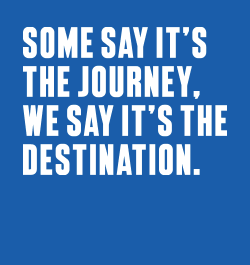

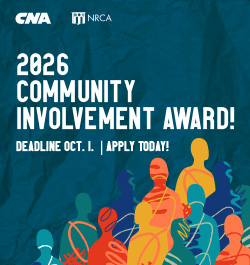



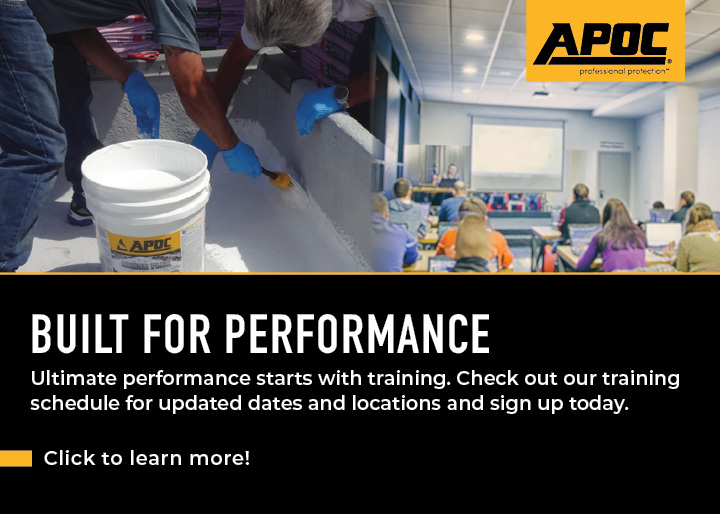


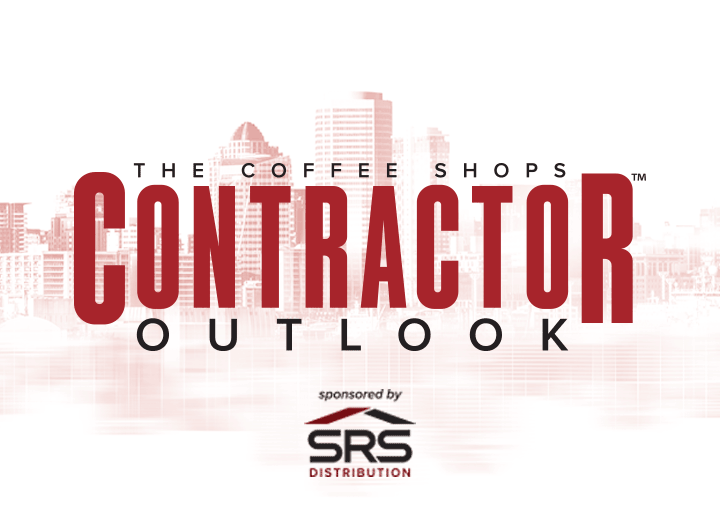



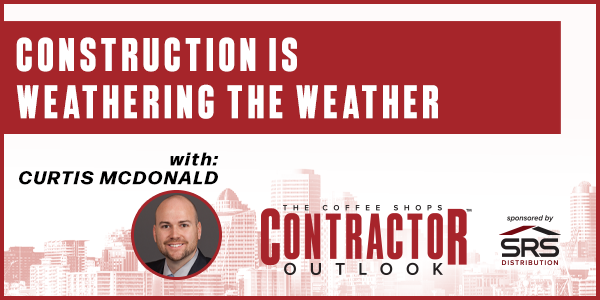






Comments
Leave a Reply
Have an account? Login to leave a comment!
Sign In